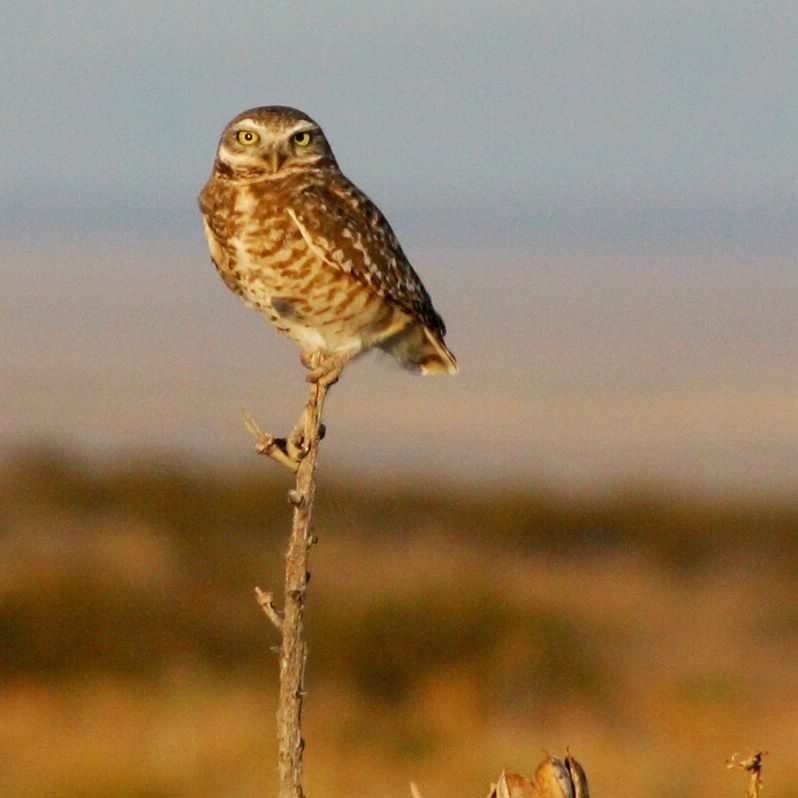New Resource- Standardized Burrowing Owl Monitoring Methods for DoD Lands
Mission-Sensitive Species (MSS) are those that require careful proactive conservation management because any future potential federal listing would result in significant impacts to the military mission.

The Burrowing Owl (Athene cunicularia) is one such species, as its open-habitat nesting behavior and reliance on burrows make it vulnerable to habitat loss and disturbance and occur across dozens of installations across its range. To support standardized monitoring and conservation efforts, the DoD AKN Program Team, in coordination with species experts within and outside the DoD, has developed a suite of recommended field methods for Burrowing Owl monitoring.
Developing the Standardized Field Methodology
Recognizing the need for consistent and effective monitoring approaches, the DoD AKN Program Team collaborated with natural resource professionals and species experts from within and outside the DoD to design standardized methodologies tailored to military lands. These methods were developed through a rigorous review of existing Burrowing Owl research, collaborator input, and field-testing to ensure applicability across a variety of habitats and operational contexts.
Recommended Monitoring Methods
The DoD AKN Portal now provides three standardized methodologies for Burrowing Owl monitoring: including a Point Count, Area Search, and burrowing montioring field method and associated AKN Protocol.
Access the Burrowing Owl Monitoring Protocols
These recommended methodologies ensure that DoD land managers and biologists collect high-quality, comparable data that support conservation planning and compliance with regulatory requirements.
To explore the full details of the Burrowing Owl monitoring protocols and incorporate them into your conservation efforts, visit the DoD AKN Mission-Sensitive Species page: BUOW Methods.
By adopting these standardized approaches, DoD natural resource managers can enhance their understanding of Burrowing Owl populations and contribute to long-term conservation goals. Check out the resources today and integrate them into your monitoring strategy!